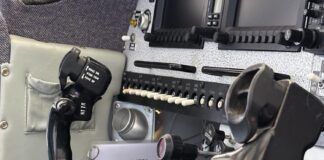Timing Magnetos
Dave Prizio’s article on external timing of magnetos (October 2013) provides a very good description of the process. However, I may be able to add a couple of twists to Dave’s process as a result of 45 years experience as an A&P/IA.
When connecting the mag timing equipment, initially connect only the L/H leads to the L/H magneto. Turn the ignition switch to the “L” position. Proceed with the timing process described by Dave. If you can check the timing, the switch is connected correctly. This little extra step can save untold hours of diagnostic effort. I have lost track of how many aircraft I’ve inspected with the “P” leads crossed.
The vast majority of aircraft piston engines only have an impulse coupling on the L/H magneto. Most key ignition switches, when placed in the start position, will ground (turn off) the right magneto. This is done to prevent the R/H magneto, with the timing typically set at 25 degrees before top dead center (BTDC), from firing the spark plugs at very low starting RPMs, causing kick-back and hard starting. If your engine will crank and then start at the moment you let go of the key, you may have crossed “P” leads.
While moving the propeller in the direction of rotation during the timing check process, bring the propeller forward to just two or three degrees shy of the mark. At this point, use the palm of your hand to carefully tap the propeller forward at the trailing edge of the very tip. With very little practice, you will be able to make ¼-degree changes resulting in a very accurate timing check.
When new mag gaskets are installed, I have always used a product called Tite Seal (Light Weight). Apply a thin coat on each side of the gasket. This stuff is sticky and will assist in keeping the gasket on the mag during installation. Tite Seal does not harden, staying soft for a very long time. You will be able to make many adjustments to your mag timing and not damage the gasket.
I hope I have added a little to an otherwise excellent article.
Dana Hall
Dave Prizio responds: Dana makes some good suggestions. They add an important point of view to the topic. It is important to be sure that the P-leads go to the correct magnetos. When working on a large number of unfamiliar airplanes, it is good practice to check this every time.
I also have no quarrel with using a non-hardening gasket sealer on the magneto gaskets. I do not verify P-lead wiring every time because I work on a relatively small number of familiar planes, most of which I helped build. I also have a general aversion to gasket sealers unless there is a specific need for them, but there is no doubt that sometimes there is such a need. I think these minor differences in our personal preferences mainly reflect the different shop environments we have experienced.
Wire Lacing Tip
Very informative article (October 2013), but how come you specify a granny knot instead of a square knot?
William Grohoski
Paul Dye responds: I prefer a granny because the purpose of the more elegant square knot is to allow it to trip, given a quick tug on one ear. We don’t want this securing knot to trip, so I use a granny.




